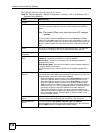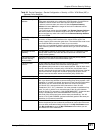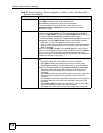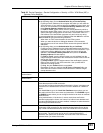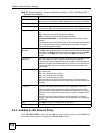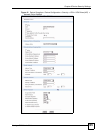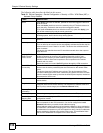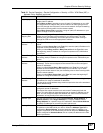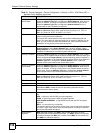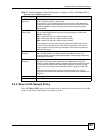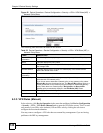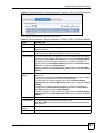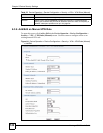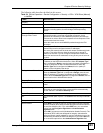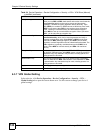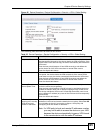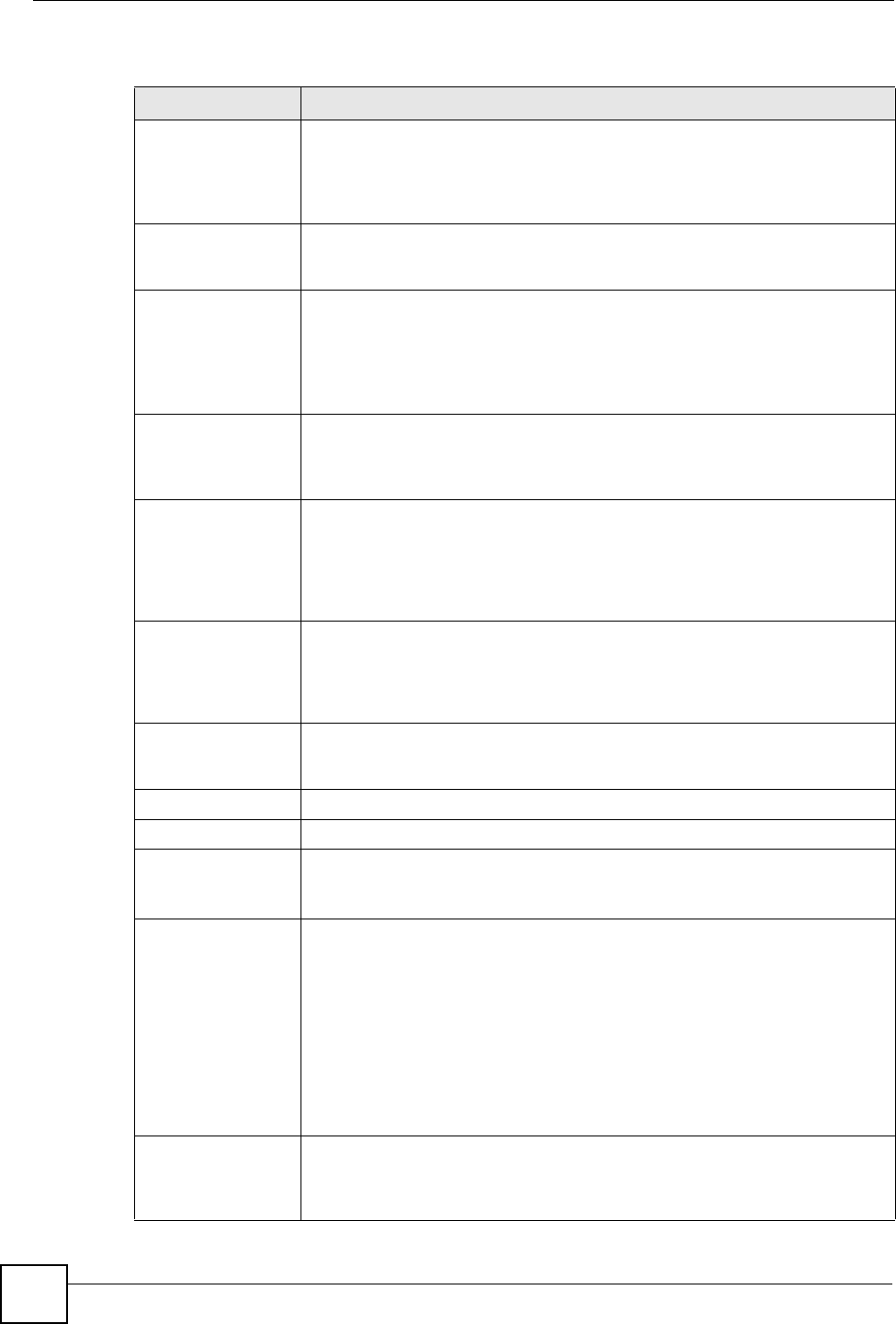
Chapter 6 Device Security Settings
Vantage CNM User’s Guide
138
Ending IP Address/
Subnet Mask
When the Address Type field is configured to Single Address, this field is N/A.
When the Address Type field is configured to Range Address, enter the end
(static) IP address, in a range of computers on the LAN behind your device.
When the Address Type field is configured to Subnet Address, this is a
subnet mask on the LAN behind your device.
Local Port 0 is the default and signifies any port. Type a port number from 0 to 65535 in the
Start and End fields. Some of the most common IP ports are: 21, FTP; 53,
DNS; 23, Telnet; 80, HTTP; 25, SMTP; 110, POP3.
Remote Network Remote IP addresses must be static and correspond to the remote IPSec
router's configured local IP addresses.
Two active SAs cannot have the local and remote IP address(es) both the
same. Two active SAs can have the same local or remote IP address, but not
both. You can configure multiple SAs between the same local and remote IP
addresses, as long as only one is active at any time.
Address Type Use the drop-down list box to choose Single Address, Range Address, or
Subnet Address. Select Single Address with a single IP address. Select
Range Address for a specific range of IP addresses. Select Subnet Address
to specify IP addresses on a network by their subnet mask.
Starting IP Address When the Address Type field is configured to Single Address, enter a (static)
IP address on the network behind the remote IPSec router. When the Addr Type
field is configured to Range Address, enter the beginning (static) IP address, in
a range of computers on the network behind the remote IPSec router. When the
Address Type field is configured to Subnet Address, enter a (static) IP
address on the network behind the remote IPSec router.
Ending IP Address/
Subnet Mask
When the Address Type field is configured to Single Address, this field is N/A.
When the Address Type field is configured to Range Address, enter the end
(static) IP address, in a range of computers on the network behind the remote
IPSec router. When the Address Type field is configured to Subnet Address,
enter a subnet mask on the network behind the remote IPSec router.
Remote Port 0 is the default and signifies any port. Type a port number from 0 to 65535 in the
Start and End fields. Some of the most common IP ports are: 21, FTP; 53,
DNS; 23, Telnet; 80, HTTP; 25, SMTP; 110, POP3.
IPSec Proposal
Encapsulation Mode Select Tunnel mode or Transport mode.
Active Protocol Select the security protocols used for an SA.
Both AH and ESP increase the device’s processing requirements and
communications latency (delay).
Encryption Algorithm Select which key size and encryption algorithm to use in the IPSec SA. Choices
are:
DES - a 56-bit key with the DES encryption algorithm
3DES - a 168-bit key with the DES encryption algorithm
AES128/AES192/AES256 - a 128/192/256-bit key with the AES encryption
algorithm
NULL - no encryption key or algorithm
The selected device and the remote IPSec router must use the same algorithms
and keys. Longer keys require more processing power, resulting in increased
latency and decreased throughput.
Authentication
Algorithm
MD5 (Message Digest 5) and SHA1 (Secure Hash Algorithm) are hash
algorithms used to authenticate packet data. The SHA1 algorithm is generally
considered stronger than MD5, but is slower. Select MD5 for minimal security
and SHA-1 for maximum security.
Table 51 Device Operation > Device Configuration > Security > VPN > VPN Rules (IKE) >
Network Policy Add/Edit (continued)
LABEL DESCRIPTION



